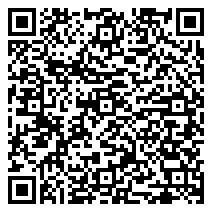Introduction
We are continuously confronted with problems that require us to make decisions. Most decisions are reached without requiring any complex decision-making process: We're hungry? We decide to eat. Some problems are more complex, like deciding how to prioritize our work or understanding why a process failed and deciding what to do about it; these require a rational approach to problem-solving. Often, things get even more complicated, or our decisions could have an important impact on our lives, careers, or the lives of those around us. That is where we must have the ability to think critically and ensure there is no flaw in our logic. At other times, the problem is so unusual that it defies rational and critical thinking; these are the times when creative problem-solving becomes an invaluable tool.
In this course, we will cover all these important thinking approaches. After understanding the thinking mechanisms, we will provide you with methods and tools that you will practice during the sessions, which can help you at work or in life, from the most mundane situations to the most difficult or unusual ones.
Course Objectives
- Build and expand decision-making, critical thinking, and creative problem-solving skills.
- Apply logical and creative approaches to solving problems and making decisions.
- Use traditional and creative tools for identifying causes and generating solutions.
- Employ creativity and lateral thinking as business tools.
- Analyze and solve actual problems facing you at work.
- Demonstrate and build credibility with upper management.
- Develop strategic approaches to problem-solving and decision-making.
Course Outlines
Day 1: Problem-Solving and Decision-Making
- Definition of ‘Problem’: Understanding the concept and challenges of solving problems.
- Problem-Solving and Decision-Making: Defining problem-solving and decision-making.
- Creative Problem-Solving and Decision-Making: How to use creative problem-solving and decision-making.
- The Helicopter View: Broadening perspectives for a clearer problem analysis.
- Problem Diagnosis: Identifying the true problem and its root causes.
- The Link Between Causes and Symptoms: Distinguishing between root causes and symptoms of problems.
- Making the Right Decisions at the Right Time: Using decision-making techniques to make timely decisions.
Day 2: The Rational Approach to Problem-Solving (Kepner & Tregoe)
- Defining the Problem: Writing a precise problem statement.
- Techniques for Recognizing Problems: How to apply problem-solving techniques in decision-making effectively.
- Six Important Questions: Clarifying the problem using logical questions.
- Rational Approach: Applying Kepner & Tregoe methodology for analyzing and solving problems.
Day 3: Problem Analysis Supplementary Tools
- Root Cause Analysis: Using root cause analysis to dig deeper into problems.
- Creative Problem-Solving and Decision-Making: Employing creative thinking to tackle challenges.
- The Five-Why Process: Using the Five-Why method to uncover the root cause of a problem.
- Cause and Effect Diagram: Understanding and drawing the cause and effect diagram to solve issues.
- Pareto Analysis: Using Pareto analysis to identify the critical few causes behind a problem.
Day 4: Decision-Making Supplementary Tools
- Effective Decision-Making: Learning key techniques for effective decision-making.
- Why-Why and How-How Analysis: Using Why-Why and How-How analysis to understand decision-making processes.
- Choice Making: Mastering the decision-making process to make better choices.
- Decision Analysis Worksheet: Applying a decision analysis worksheet to compare alternatives.
- Using the Matrix: Learning how to apply a decision matrix for evaluating options.
- Reaching Consensus: Understanding consensus in decision-making.
Day 5: Creativity and Problem-Solving
- The Need for Thinking Skills: Why enhancing thinking skills is essential for problem-solving.
- Stages in Problem-Solving and Decision-Making: Understanding the stages of critical thinking in decision-making.
- The Human Brain: Exploring the mental structures that impact problem-solving and decision-making.
- Understanding the Two Hemispheres of the Brain: How both sides of the brain contribute to creative problem-solving.
- Critical Thinking: How to improve critical thinking and apply it to problem-solving.
- Lateral Thinking: Applying lateral thinking techniques to think outside the box.
- Mental Blocks to Creative Thinking: Identifying and overcoming mental blocks that hinder creative solutions.
- Brainstorming: How to use brainstorming to generate innovative ideas.
- The Six Thinking Hats: Using the Six Thinking Hats technique to encourage different perspectives and creative solutions.
Why Attend This Course: Wins & Losses!
- Enhance Critical Thinking Skills: Learn why critical thinking is important and how to improve critical thinking to make informed decisions and solve problems effectively.
- Master Decision-Making Techniques: Gain an in-depth understanding of various decision-making techniques, helping you make strategic choices in your personal and professional life.
- Solve Problems Effectively: Use a combination of traditional and innovative techniques like root cause analysis and Pareto analysis to address problems effectively.
- Utilize Creativity as a Business Tool: Learn how to apply creative problem-solving and lateral thinking in your business decisions to boost innovation.
- Achieve Better Results: Use tools like the decision matrix and Kepner & Tregoe methodology to make well-informed decisions that lead to actionable and successful outcomes.
Conclusion
This problem solving and decision making training provides you with all the tools you need to become proficient in problem-solving, decision-making, and critical thinking. Whether you're starting your career or looking to enhance your existing skills, this course will equip you with the techniques and frameworks needed to solve problems creatively, make effective decisions, and apply critical thinking in your professional and personal life.
Sign up now to sharpen your decision-making skills and become an expert in solving problems and making well-thought-out decisions!


